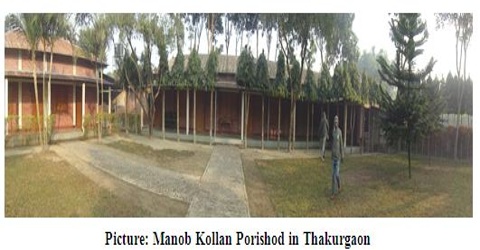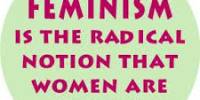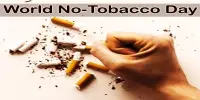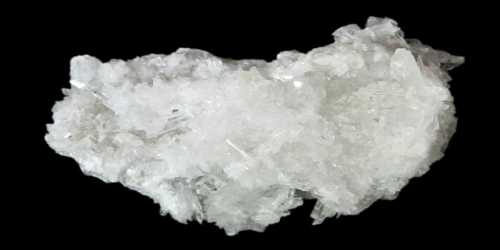Main purpose of this study is to discuss Live In Field Experience in Barahaat para. Report focus on to get the information on the current condition of rural life, their economic system, socio economic infrastructure, culture, relationship between each other, household pattern, market and the market structure finding the intensity of the poverty in the village and different conditions from the villagers.
Objectives of this report
This report on the rural community of Bangladesh has been drawn with a view to achieve two goals:
Firstly, as a partial requirement of the course Live in Field Experience (LFE)
Secondly, to get the information on the current condition of rural life, their economic system, socio economic infrastructure, culture, relationship between each other, household pattern, market and the market structure finding the intensity of the poverty in the village and different conditions from the villagers.
The objectives for which the report has been carried out are given below:
- To familiarize the participants with real socio-economic realities of rural life by estimating literacy rate, level of education and working status of the population.
- To identify the changes that are taking place in social structure and economic development by measuring their monthly income and expenditure, the ownership of land and occupation.
- To know their agricultural method, cropping pattern, rotation of crops, and their seasonal life pattern.
- To get the real picture of the present environmental condition of the village, like source of water supply, toilet facilities, and kind of fuel they use.
- To reflect the state of health and health awareness, vaccination and other medical facilities are available in the village. Do they really practice some common unscientific practices and identify why they believe in these camouflaged truths? And what are the effects by taking these types of practices?
- To identify the existing market structure of the village and thus end up with a proposed market structure and what steps are taken by them to distribute of their rural product.
Overview of Manob Kollan Porishod (MKP) in Thakurgaon
A constant analysis of the magnitude of poverty and its trends, the strategies effective for its reduction and eventual elimination, and their meticulous implementation has brought MKP (Manob Kollan Porishod) where it is today. The MKP development process started in a few villages in some districts in few years before. The name MKP is an acronym of three Bangla words, which means Manob= Human, Kollan= Wellbeing and Porishod= Association. So it stands like: Wellbeing of Human Association.
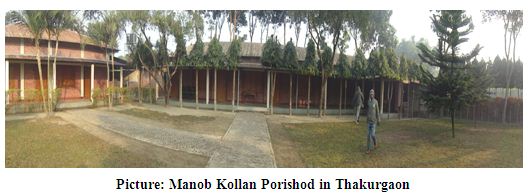
Human development and empowerment of the poor who gradually stand tall to achieve freedom from poverty by themselves. Empowerment means that the poor are united and organized, become aware of the real causes of their impoverishment, develop leadership among themselves, mobilize their material resources, increase income and employment, develop capacities to cope with natural disasters, become functionally literate, take better care of their health, become engaged in environmental protection and regeneration, get elected in local government bodies and community institutions, and have better access to public and common property resources. Since its inception, MKP has been both a pioneer and practitioner of this holistic strategy of empowerment and has made a significant contribution to a modest reduction of poverty already achieved in Thakurgaon district.
Participatory rural appraisal
Participatory rural appraisal (PRA) is a label given to an upward family of participatory approaches and methods that highlight local data and enable local people to make their own appraisal, analysis, and plans. PRA is originally developed for use in rural areas that has been employed successfully in a variety of settings. The principle of PRA is to enable advance practitioners, government officials, and local people to work together to plan context-appropriate programs.
Participatory rural appraisal Tools
We used the following PRA tools –
- Village-Resource Mapping and Transect
Observatory walks to study natural resources, topography, soils and vegetation, farming practices, problems and opportunities which are cross tallied with the resource mapping and modeling. It is done by walking through the area and we gathered a few villagers and asked them to draw the map on the soil, from where we had the idea about the actual map.
- Social Structure and Social Change Process:
The map concentrates on the important social establishment, different locations of households, crop fields and other resources of the village. The transect map gives a view of the village’s natural resources, topography, soils and vegetation. Farming practices, problems and opportunities which are cross tallied with the resource mapping
- Income Assessment and Gender division of Labor:
Gender analysis involves the desegregation of quantitative data by gender. It highlights the different roles and learned behavior of men and women based on gender attributes. These vary across cultures, class, ethnicity, income, education, and time; thus, gender analysis does not treat woman as a homogeneous group or gender attributes as immutable.
We also interviewing a suitable villager(s), who then classifies different members into separate groups identified as distinct economic classes in the village.
- Health and Environment Awareness Factors
These villages have different health condition. We can analyze it from different points of view. If we have focused on health issue, we can understand many things such as the education, social, economy, administrative, cultural and wealth peoples’ mental and physical condition on health.
- Rural Market Network:
For doing the market analysis we went to the haat during the haatbar. We interviewed different traders and sellers. We asked them different questions as we were instructed. We also interviewed some permanent shop owners. They gave us an idea about the product flow and distribution channels.
Introduction
Bangladesh is a land of village. More than 75% people live in village. This country depends on the important roles played by the villages in the development of the country. But the villages and villagers are always being neglected.
That’s why if we want to change the worse scenario the reformation should start from the grass root level. For this we need to improve our village condition, so to improve the overall country.
My assigned village (Jagannathpur) was so big which is not possible to cover it up. That is why I have concentrated on one Para as a sample of whole village. My selected a Para was Barahaat Para, where I can get overall idea like education, culture, no of male and female etc. Md. Shajhan Ali to draw the map of Barahaat Para, and visit with to observe the whole Para at a glance.
Population, voter and Households:
The population of Jagannathpur is approximately 4300. Among them male voter is 1150 and female voter is 1050. In my assigned area there are around 200 people are live in Barahaat Para. Where about 62 are male voter and about 55 is female. Most of the inhabitants are Muslim at the same time site by site other religious people are also staying in this village. From the table could come up one conclusion that this young age group people are staying this Barahaat Para.
| Age | Male | Female | ||
| No. | % | No. | % | |
| 1 to 20 | 14 | 11.97 | 10 | 8.55 |
| 21 to 40 | 14 | 11.97 | 15 | 12.82 |
| 41 to 60 | 15 | 12.82 | 14 | 11.97 |
| 61 to 80 | 5 | 4.27 | 7 | 5.98 |
| 81 to 100 | 8 | 6.84 | 5 | 4.27 |
| Total | 56 | 47.87 | 51 | 43.59 |
Table: Age and Sex Distribution of Study Population
History of Barahaat para
We got a very interesting story about this para. By talking with the villager I found out why the name is so. Villagers said 100 years before twelve people came to this place from another area and made twelve houses. In Bengali twelve means “baro” so they decided to call this place as Barahaat para.
House Type
People of Barahaat Para is used for living traditional houses, where house where build up by tin and bamboo combination. Recently they are using modern construction materials.
Family Type
As like city and towns the villagers are moving joint families to nuclear families. In my survey I have found 21 families running nuclear family structure, which was 84% and only 4 families as 16% in joint family structure. This change has a strong impact over the lifestyle of the villagers.
| Family Type | No. | % |
| Nuclear | 21 | 84 |
| Joint | 4 | 16 |
| Total | 25 | 100 |
Table: Family Type
School
From survey I have found that after primary school compilation drop out rate is too high, at the same time female condition is worse. In the Jagannathpur there are Primary School, one Girls High School (Jagannathpur Girls School) and six NGO School in Jagannathpur. In our assigned Para there is only one BRAC School where most of students enrolled as student, rest of them go to Jagannathpur Primary school.
Mosque and Temple
Jagannathpur village there are 11 mosques and three Hindu temples. In Matihak Para there are 3, in Khalifa Para there are 2, in Nebda Para there is 1, In Mijanur Para there are 2 and in Doba Para there are 3 mosques. Again among the three Hindu temples one of them is in Barahaat Para and rests of the temples are in Khalifa Para.
Transect of Barahaat Para
To get the micro view of the whole Barahaat Para I do transect. Transect is on type of PRA technique which represents the structure of the whole village in terms of its components. It has overall impact on the relationships between the different important components of the village. It includes soil type, the land used pattern, the types of crops and trees, etc.
Findings
- There are different types of tress has been found, among this Mango, Bamboo bush etc.
- In my transect map house hold are made of mud and clay some are also break made houses
- Barahaat Para land height is more or less plain, because people are using this land for agricultural purpose and house hold activates.
- Soil type is more or less sandy and mixed people are using it for farming purpose.
- Through my Transect map I have a cross lots of cultivable fields that is why I show different types of crops have been grown in the fields. Such as, potato, rice, corn etc.
PRA formation has also helped us to construct the social change process map and wealth map. The changing process is an over all picture of the geographical and cultural changes that took place in the Gram due to civilization. And from the feed back of the Key Informants we were able to identify the classification of the status of the villagers in Barahaat Para which I have introduced in the resource map & wealth rank.
Timeline analysis is used to visualize the major perceived changes. This is done to take information about past events in the interrelated fields. We have divided the social change process into four time Frames which are as follows: Before liberation, 1971-1980, 1981-1990, 1991-2000, 2001-onwards.
Population
Before liberation, it was a combination of the joint and extended families since early marriage was very much common at that time. In the joint family, the entire family used to be leaded by the head of the family (grandfather or father) that strained the children to live all together. After the liberation war, as the population of this area has increased, the amount of houses has also increased a lot. The influence of Islam has enforces some of the members to get separated in the village. The family planning has been introduced to jagannathpur and the people started to become conscious about family planning now.
Marriage Type
Because the people were very much religious and illiterate the female were forced to get married in very early of their age. The female did not have the opportunity to exercise her right to choose. For this reason, early marriages are also referred to as forced marriages. The study concluded that deep-rooted traditions such as, considering marriage as a success for the girl and her family, ensuring virginity of the girl when she marries, concern that the girl will become too old for marriage, and creating a bond with the bridegroom’s family are the major reasons for child marriage. The study refuted the widely-accepted view that economic factors are the major reason for early marriage.
Agriculture
The scenario of agriculture is unlike to the others villages of the country. Agriculture is not the main occupation of the people of Jagannathpur village. The reason behind this is the poor condition of soil. But the situation was not as poor than today. Many crops like paddy, cauliflower, sugarcane, wheat and many other vegetables were grown there. But day by day the population has been increased and people were started to build houses in fertile land for living purpose. Though the Jagannathpur is situated in a hilly place, the soil is not also good for cultivation. It needs much irrigation to grow crops there.
Health
In pre liberation period to 1990 people are not aware about sanitation. They meet their natural call in open places, jungle or in hanging latrine. Now scenario is as changing people are becoming educated and economically strong, which make them more aware about sanitation. Now they use ring slab, Pit latrine.
Vaccination is first introduced in Bangladesh in 1982, but people in Barahaat got this facility after 1990. From that time, day by day people became more aware about vaccination. From our survey we knew that 25 families all give their children all vaccination 100% except hepatitis, because this vaccination was introduced only a few years ago. The vaccination for Polio is common in each family of this village.
Now a day, in our assigned village, people’s perception about family planning has changed significantly. The ratio of family planning is increasing and large numbers of families including the newly married families are interested in family planning. Presently NGOs and Government have taken proper steps in this region. Family planning and other steps have adopted by the villagers. So currently the growth rate of population is at a stable stage.
Women Rights
Like all other country of the world Bangladesh government emphasize on women rights. Jagannathpur is Muslim area, like all other Muslim people in here not allowed women to do other than households work. Now-a- day’s people have become educated and flexible. They allow their women for education, casting votes, shopping and work out side or go outside for their needs. Women are now work in different Ego’s and take loan from NGO for doing small business.
Dowry
In Jagannathpur village the tendency of giving dowry is decreasing. Because the people are getting educated and women are more empowered than before. Law and order is effective there. But we cannot say it strongly that the dowry is fully diminished. It remains in its own state but the pattern of dowry has been changed.
Transportation
Before liberation when road was not good for that there was no suitable transportation system. If men had gone to work or visit relatives house outside the village they usually go by foot or use ox curt. And women will go one place to other also by foot. In 90‟s road was became good and different transportation will introduced day by day in Barahaat Para such as Bicycle, Van, Rikshaw,2 strokes taxi and Motorcycle, etc.
Conclusion
Social change is a massive incident which cannot be clarified by this small study. But, after studying the rural life style of the villagers of the Barahaat para village, we found that there is some improvement like increasing rate of female education, decrease child marriage, increase the health care facilities, awareness about family planning, healthy sanitation, tree plantation, etc has taken place in the rural society.
Wealth rating
We will deliver information about financial condition of the families. We rank them according to their opinion and the data they provided us. We cover 33 families in that particular area with the help of the villagers. We divided the families in to three parts:
- Upper class
- Middle Class
- Lower class
Among the 33 families that we talked with we found upper class is about 5%, middle class is 30% and rest of all lower class families. We classified them by based on infrastructure, occupation, other income source, per month income, loan, land size, cattle, crops, remittance and per capita income. Highest number of families falls under middle class family in our ranking. Most of them are related with agricultural work and some are engaged in service.
Upper class
We have found that, the average income of wealthy person is above 100,000tk yearly. We found they have 5 to 7 members in their family in average. Their children go to the school and college outside the village because there are only two schools in this Village. Most of the wealthy people are farmer but they have other income sources like service, remittance etc. If we compare with the others area of the country then we can say that the villagers of this Barahaat Para are not rich.
Middle Class
The middle class families are moderate earning level of farmers who grow enough to meet their operating cost. Some of them took loan form NGO and improve their living standard. They utilize their land as much as to produce more crops. They also want to make their children educated. This middle class family’s yearly income is between 50,000tk to 100,000tk yearly
They have very small amount of land and some of them work in to other land. They also don’t have enough money to open their own business. So they are engaged with seasonal work like day labor.
Lower Class
We talked with them about this matter and they said that Micro Credit system is blessings for them and also very helpful. And they will be able to do that only when they can go to up to that standard. Micro Credit can help them about this matter. With this kind of attitude now their income level is less then 30000 tk. And they are trying hard to come ahead with their inspiration.
Profession of income earnings members
We’ve found that most of the people are related with the agriculture in Barahaatpara. But there are some other people who are related with other occupation. Like- they are involved with petty business, trolley driver, day labor and service. So I remark that the most important role playing beside this area’s economic condition is agriculture.
| Profession | In the village | |
| Agriculture | 25 | – |
| Poultry Rearing | – | – |
| Cattle/Goat Rearing | – | – |
| Petty Business/shop | 5 | – |
| Vendor | – | – |
| Transport Worker | 3 | – |
| Construction Worker | 3 | – |
| Garments Factory | – | – |
| Service | – | 2 |
| Industry | – | – |
| Others (day labor) | 2 | – |
Form the table above, we can see that among the income earner 25 people earn through agricultural activities. It means almost 76% people are involved in agricultural work and rests of 24% percent people are engaged with other activities. The engagement of these peoples in different other works shows that people are going way slowly from agricultural work. Another reason is people are becoming more educated and they don’t feel good in agricultural work. They want to open their own business.
Main crops in this area
Farmers produce various types of crops here. We get the main idea of the main crops in this area. They helps us more to get accurate information about what they are doing actually. The main seasonal crops were Amon, Corn, Potato and Eggplant.
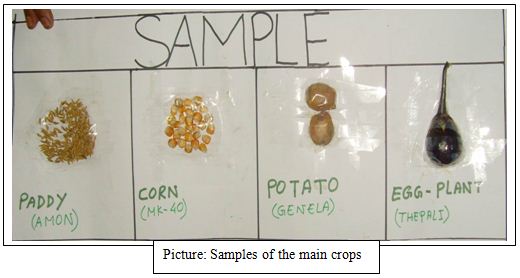
Amon
The land processing for Amon usually starts in the third week of Joistho, in the mean time farmers start irrigation. Then in the first week of Ashar they broadcast the seeds and last week they start weeding. In the second week of Srabon they give the fertilizer. From the middle of the Srabon to middle of the Agrahayon is the growing period and the harvesting period two weeks, that means till the second week of Poush. The production of Amon generally depends on rainfall, but over rainfall can damage the crops.
Corn
The land processing for Corn usually starts in Agrohayon, in the mean time farmers start irrigation. Then in the Magh-Falgun it starts transplantation and last week they start weeding, controlling pest, fertilize. In the Choitro is the growing period and in the mid Boishakh to mid Ashar is the time for harvesting.
Potato
It is the easiest crop to grow. The land processing for this potato usually starts in the third week of Katrik to mid Poush, in the mean time farmers start irrigation, using fertilizer. Then in the first week of Posh it grow and farmers starts harvesting.
Egg-plant
The land processing for it starts in the second week of srabon to mid Bhadro, framers starts the seed bed in Ashar. Seed grows in Katrik which is two weeks from Ashar. Then transplantation and irrigation is on Poush. Plant grows on Poush. Then use of fertilizer, weeding, control pest in Falgun. And of Choitro is the time for harvest.
Cost vs. benefit analysis
Here in this section we calculate the cost and benefit of the major crops cultivate in Barahaat Para. Here I have found that most of the farmers cultivate rice in their own land or in borga system. They also cultivate vegetables and fruits. The total cost of production from land preparation to harvesting is given in the next table and here I also mentioned the individual cost of each section of production. The cost of seeds, seedbed preparation, labour, pesticides, fertilizer, processing activities and distribution are given under land preparation, weeding, irrigation and harvesting. Finally, the profit farmers can gain by selling rice. In our calculation I tried show the cost and benefit of rice (Amon) potato, corn and egg-plant per bigha.
| Crops | Total Production (per acre) | Selling price/ mound | Total selling price | Total Cost (tk.) | Profit (tk.) | Loss (tk.) | percentage (%) |
| Amon | 50 mound | 460 tk | 23,000 tk | 20,100 tk | 2900 tk | — | 14.4% |
| Corn | 50 mound | 400 tk | 25,000 tk | 27,200 tk | 2200 tk | — | 12% |
| Potato | 20 mound | 250 tk | 18,500 tk | 22,000 tk | 2500 tk | — | 15% |
| Egg-Plant | 50 Mound | 500 tk | 25,000 tk | 28,000 tk | 3000 tk | — | 10% |
Conclusion
Agriculture has in the past been wholly dependent upon the vagaries of the monsoon. A poor monsoon has always meant poor harvests and the threat of famine. Among the remedial measures adopted has been the construction of a number of irrigation projects designed to control floods and to conserve rainwater for use in the dry months.
Health condition of Jagannath village
Environmental health is becoming a major preoccupation on a world-wide scale. There is a close correlation between a population’s state of health and the quality of its environment. Public policies now include environmental concerns, which have strong implications in terms of development and well-being.
Our assigned area was Barahaat Para .The overall health condition of the village is quite good. NGOs are working for long time in this village and the social condition is improving a lot compare to previous time. I have found that people of this area are aware of vaccination and they regularly go to the nearby health complex to give their children all vaccination.
Sources of water
Survival of human life without water is hard to think as it is the life saving natural element. They have knowledge about what type of water is healthy and what type of water spreads water diseases. By analyzing the collected data we can see awareness and uses of water in the following table:
| Purpose | Sources | |||||||||
| Piped Water | Tube-well | Pump | Pond water | Others | ||||||
| No. | % | No. | % | No. | % | No. | % | No. | % | |
| Drinking | 0 | 0 | 23 | 92 | 0 | 0 | 0 | 0 | 0 | 0 |
| Bathing | 0 | 0 | 16 | 64 | 0 | 0 | 9 | 36 | 0 | 0 |
| Washing | 0 | 0 | 18 | 72 | 0 | 0 | 7 | 28 | 0 | 0 |
| Cooking | 0 | 0 | 23 | 92 | 0 | 0 | 0 | 0 | 0 | 0 |
Sanitation Syatems
Healthy sanitation system is mostly responsible for the well being and health condition of the village. Before 1995, people didn’t have any good sanitation because of their lack of knowledge. But in 1995, Bangladesh Govt. gave ring slab at free cost. Now almost all people have ring slab. According to our survey, all the sanitation systems are appreciable and there were quite good number of healthy latrines.
Family planning method
Though our urban people are aware about the family planning but the rural people are not so conscious about it. According to survey data almost all women are used to take Somatic birth control injection and very few women take pills or other methods.
Toilet Facility
| Type | No. | % |
| Septic Tank | 6 | 23.08 |
| Ring Slab | 15 | 57.69 |
| Pit Latrine | 4 | 15.38 |
| Others | 1 | 3.85 |
Vaccination
The villagers also know very well about vaccination. According to our survey 100% people were 6 vaccinations, only 5% of the samples were aware of the 7th vaccination. The villagers become aware about vaccination through radio, NGO workers and vaccination cards.
Diseases
During our survey, we found that most of them suffered from common diseases like cough, acidity, seasonal fever etc. the most common disease among the children is diarrhea because children walk bare footed and sometimes they eat anything taken from the ground. We have found the following diseases in Barahaat Para.
Treatment Facilities
According to our survey we found that the living people of Barahaatpara are very much conscious about their health and in case of any medical problem they go to the local pharmacy. Because of long distance from the village people can’t go to the health care center. Besides most of the villagers claim that, they have to wait a long time in health care center and sometimes the specialized doctors are not available for emergency treatment.
Environment Barahaat Para
Environment is an important issue for everybody because health and environment are closely interrelated to each other. The discussion appended below will mainly put spotlight on the surroundings, weather and various other factors of Barahaat Para.
In case of water most of the people use tube-well water for drinking and cooking. Very few people use pond water for some specific purpose. The waste disposing way is quite hygienic of the villagers. They use firewood, straw, leaves and twigs as fuel, sometimes cow dung is used as fuel. The inner part of the village is surrounded by a long ditch and the entire village is covered mostly with bamboo trees. The villagers have a good number of vegetable and fruit trees and we also collect information about trees, birds and animals. The respondents said that there are many trees, birds and animals which are now extinct. The natural disasters are mainly heavy rain.
Cooking place
In order to keep our health safe from various diseases we need good sanitation and cooking place.
It is hard for the villagers to get established cooking place which urban people can get easily. So visibly there cooking place is little bit unhygienic but in this current situation they complete their cook.
Wast disposals
This is one of the major causes of our health and environment problem. If we don’t dump the waste properly then it will cause many problems especially health problem. In the field survey we observed that the villagers leave their waste in a hole beside their house and we found some other people who throw their waste into ditch and very few throw into specific place.
Promotional Activities
The promotion technique for all products is not always same. The villagers are too much influenced by TV and radio advertisement. Miking, canvassing are another way of promotion. At Khochabari hut sales promotion is done most of the time in the peak season because the farmers try to increase their profit keeping the existing customer. Advertising is done in the case of seeds fertilizer, pesticides, and soap and for some other packet goods. Signboards are using to promote in some shops.
name: Shukumar Bhoumik
Occupation: Chicken seller
Shukumar Bhoumik is a chicken seller. He is living with a family of wife and two children and his mother. He has been involved in business profession when he was 18. He has chosen this occupation because he got some easy way to buy these chickens and he thinks this business is very profitable for him.
First he used to sell vegetables. But now he started this business from last six years. He said, from last few months his profit is decreasing because of this so called Bird flue. Even in middle of 2010 his business was more profitable than now. He claimed that his chickens are totally disease free. Because he bought these chickens from a good poultry firm.
I found that he is very popular in the Khochabari Haat at Thakurgoan. His business is in a very suitable place. He is not interested in any other business beside it, because he is not well educated, his father died. So he doesn’t have anyone to support him or to struggle for. Now his profit is monthly 1000tk but few months before he earned monthly approximately 2500 taka.
Micro credit
From the last 30 years since 1980’s Micro credit comes to prominence in the, Bangladesh and other countries. Here we can differentiate the micro credit and the micro finance. Micro Finance means providing very poor families with very small loans to help them engage in productive activities or grow their tiny business.
Micro Credit is especially for the poor people. But it can’t be an appropriate tool for the all particular class. Though a family may have a significant income for extended periods, it may also face months of no income.
For this reason it reduces their ability to enter into the type of commitment demanded by most of the Micro Credit providers. Some people are just too poor, or have income that are too undependable of those living below the poverty line need safety net programs that can help them with basic needs.
| Types | Amount Given |
| Irrigation | 15000-20000 BDT |
| “Borga” Loan | 6000-15000 BDT |
| Bio gas loan | 40000-55000 BDT |
| Tube well Loan | 2000 BDT |
| House Loan | 20000 BDT |
It is quite expensive for providing financial services to poor people, especially in relation to the size of the loan provided. A 1000 tk loan requires the same personnel and resources as a 5000 tk loan, thus increasing per unit transaction costs. Loan officer must visit the client’s home or place of work, evaluate creditworthiness on the basis of interviewing with the clients family and references. And later when loan provider comes to collect the loan he provided, it also can cost much for the loan provider.
Name: Md. Mojid Mia
Occupation: Tractor Driver
Md. Mojid Mia is a tractor driver. He has wife, two sons and his mother and father in his family. He has been involved in this business around 10 years. He has chosen this occupation because he loves this occupation and he has hands on training of driving so he loves this business.
He started this business by taking loan from Grameen Bank. First he has taken 1 lakh taka from there and adding 1 lakh taka more and bought this tractor in second hand. After 5 years he took 2 lakh taka more and bought another tractor. Grameen bank’s interest rate is 30%. That means he has to give 300 tk for each 1000 tk. And he has to get over this loan in 3 years.
He shared that, after every month he get nice amount of money. He has two tractors. Sometimes he also rent this tractors hourly basis. Each hour he takes 100-150 taka. And as a driver he takes 200-250 tk for each hour.
Name: Khalid Ullah
Khalid Ullah is a renowned pesticides seller in the Jagannathpur village. He lives with his wife and five children. He lives as a nuclear family.
He is doing his business for last 5-6 years. He sells chemical and biological substance as pesticide. He has insect killer, plant growth regulator, rat and mouse killer.
He started his business without taking any kind of loan from the banks.
He said, this is very much profitable business in this village. He usually has a shop in bazaar but in haat time he also place another shop in the haat area. So we found that the ship is very popular to Khochabari Haat at Jagannathpur people as well.
He thinks the reasons of profit increasing are he has all kinds of pesticides and there is no competitor. He is not interested in any other business beside it. He earns monthly 8000tk to 10,000tk. He is very happy with his current economic condition.
Conclusion
To understand the real situation of the village and the villagers there is no other alternative but to go the village. There are so many things to be discovered even in our own backyard, but we tend to ignore their beauty. Before going to the LFE, we had some preoccupied ideas about village and village life.
We often go to abroad to enjoy our winter vacation. But how many of us give a visit to the rural areas? Surely not many people will answer in affirmative. The situation is quite similar as described by Rabindranath-
LFE program gives us an ample opportunity to know about the different elements of rural market, factors that affect rural market and the distribution channel of different products. We can differentiate the difference between urban market and rural market.
The positive attitude toward female education, the low incidence of female oppression, the willingness to work hard and openness to accept new ideas and changes are the positive sides of social changes.
As our study of health issues, the high rates of vaccination suggest that awareness in not so much of a problem as lack of medical facilities is in the rural areas.
At the end we can say that we are very much thankful to IUB and the authorities and obviously to the kind hearted and supportive villagers of Barahaat para. This LFE was a fabulous experience for all of us and the lessons that we learnt, will remain with us for the rest of our life.
